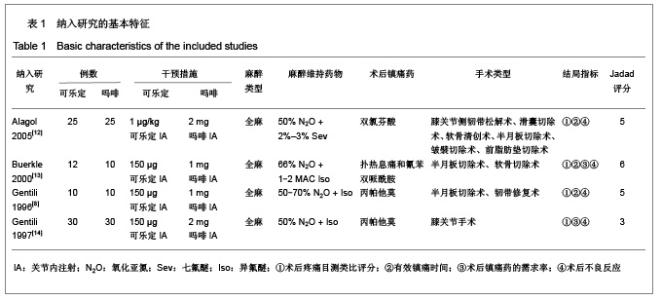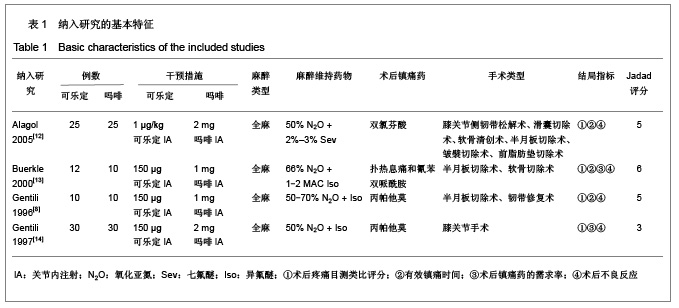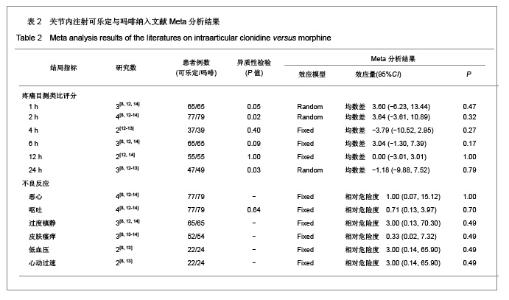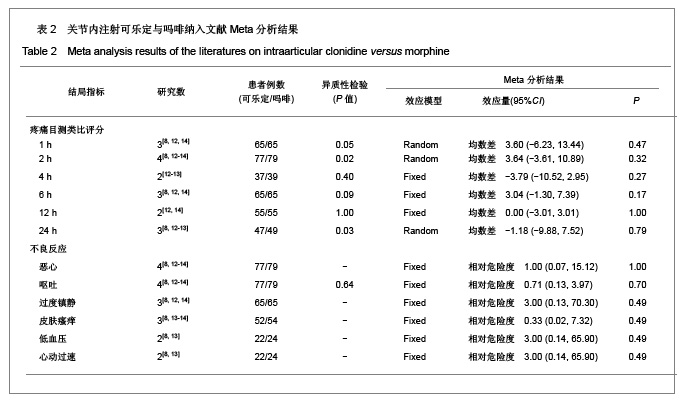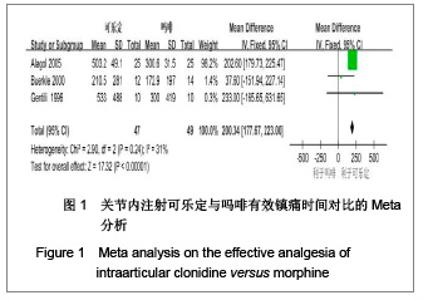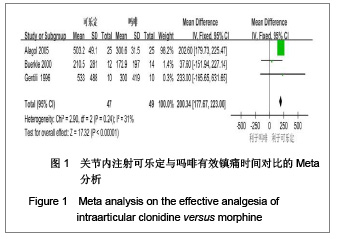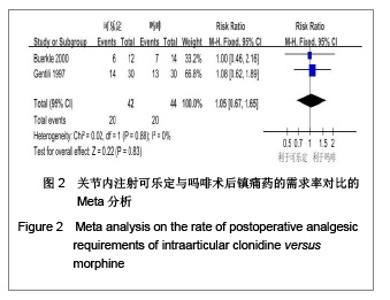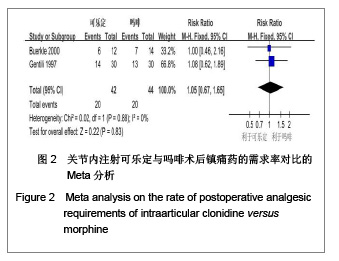| [1] Solheim N, Rosseland LA, Stubhaug A. Intra-articular morphine 5 mg after knee arthroscopy does not produce significant pain relief when administered to patients with moderate to severe pain via an intra-articular catheter. Reg Anesth Pain Med. 2006;31(6):506-513.[2] Anil G. Update on intra-articular analgesia. Tech Reg Anesth Pain Manag. 2003;7(3):155-160.[3] Moiniche S, Mikkelsen S, Wetterslev J, et al. A systematic review of intra-articular local anesthesia for postoperative pain relief after arthroscopic knee surgery. Reg Anesth Pain Med. 1999;24(5):430-437.[4] Stein C, Machelska H, Schäfer M. Peripheral analgesic and antiinflammatory effects of opioids. Z Rheumatol. 2001;60(6): 416-424.[5] Ziegler CM, Wiechnik J, Mühling J. Analgesic effects of intra-articular morphine in patients with temporomandibular joint disorders: a prospective, double-blind, placebo-controlled clinical trial. J Oral Maxillofac Surg. 2010;68(3):622-627.[6] Pöpping DM, Elia N, Marret E, et al. Clonidine as an adjuvant to local anesthetics for peripheral nerve and plexus blocks: a meta-analysis of randomized trials. Neuroscience. Anesthesiology. 2009;111(2):406-415.[7] Gupta A, Bodin L, Holmstrom B, et al. A systematic review of the peripheral analgesic effects of intraarticular morphine. Anesth Analg. 2001;93(3):761-770.[8] Gentili M, Juhel A, Bonnet F. Peripheral analgesic effect of intra-articular clonidine. Pain. 1996;64(3):593-596.[9] Higgins JPT, Green S (editors). Cochrane Handbook for Systematic Reviews of Interventions Version 5.1.0 [updated March 2011]. The Cochrane Collaboration, 2011. Available from www.cochrane-handbook.org .[10] Jadad AR, Moore RA, Carroll D, et al. Assessing the quality of reports of randomized clinical trials: is blinding necessary? Control Clin Trials. 1996;17(1):1-12.[11] Banares R, Albillos A, Rincon D, et al. Endoscopic treatment versus endoscopic plus pharmacologic treatment for acute variceal bleeding: a meta-analysis. Hepatology. 2002;35(3): 609-615.[12] Alagol A, Calpur OU, Usar PS, et al. Intraarticular analgesia after arthroscopic knee surgery: comparison of neostigmine, clonidine, tenoxicam, morphine and bupivacaine. Knee Surg Sports Traumatol Arthrosc. 2005;13(8):658-663.[13] Buerkle H, Huge V, Wolfgart M, et al. Intra-articular clonidine analgesia after knee arthroscopy. Eur J Anaesthesiol. 2000; 17(5):295-299.[14] Gentili M, Houssel P, Osman M, et al. Intra-articular morphine and clonidine produce comparable analgesia but the combination is not more effective. Br J Anaesth. 1997;79(5): 660-661. |
